Parthenon Project | Autumn 2022
West Frieze

The West Frieze faced the entrance to the Acropolis, and shows the start of the Panathenaic procession. The general sense of direction is from right to left and the West Frieze is one of the most celebrated parts of the Parthenon frieze. It was left mostly intact after the explosion of the Parthenon by the Venetian attack and today it lays divided between the British Museum and the Acropolis Museum (as Lord Elgin took the first two blocks to England).
Since each scene in the block is self contained but still connects to the other blocks by the continuous story of the procession, it is helpful to see the blocks layed individually and later scroll through the Acropolis Museum’s overview of the frieze. Additionally, each scene is confined to a single block which raises the possibility that the sculpture was carved on the ground and set into place afterwards.
The following section of the website will analyze the individual blocks of the west frieze. There are accompanying portions of text for certain blocks.
Block 1:
There is a marshall at the beginning and end of the frieze and between them are various carvings of horsemen and horses in different poses.
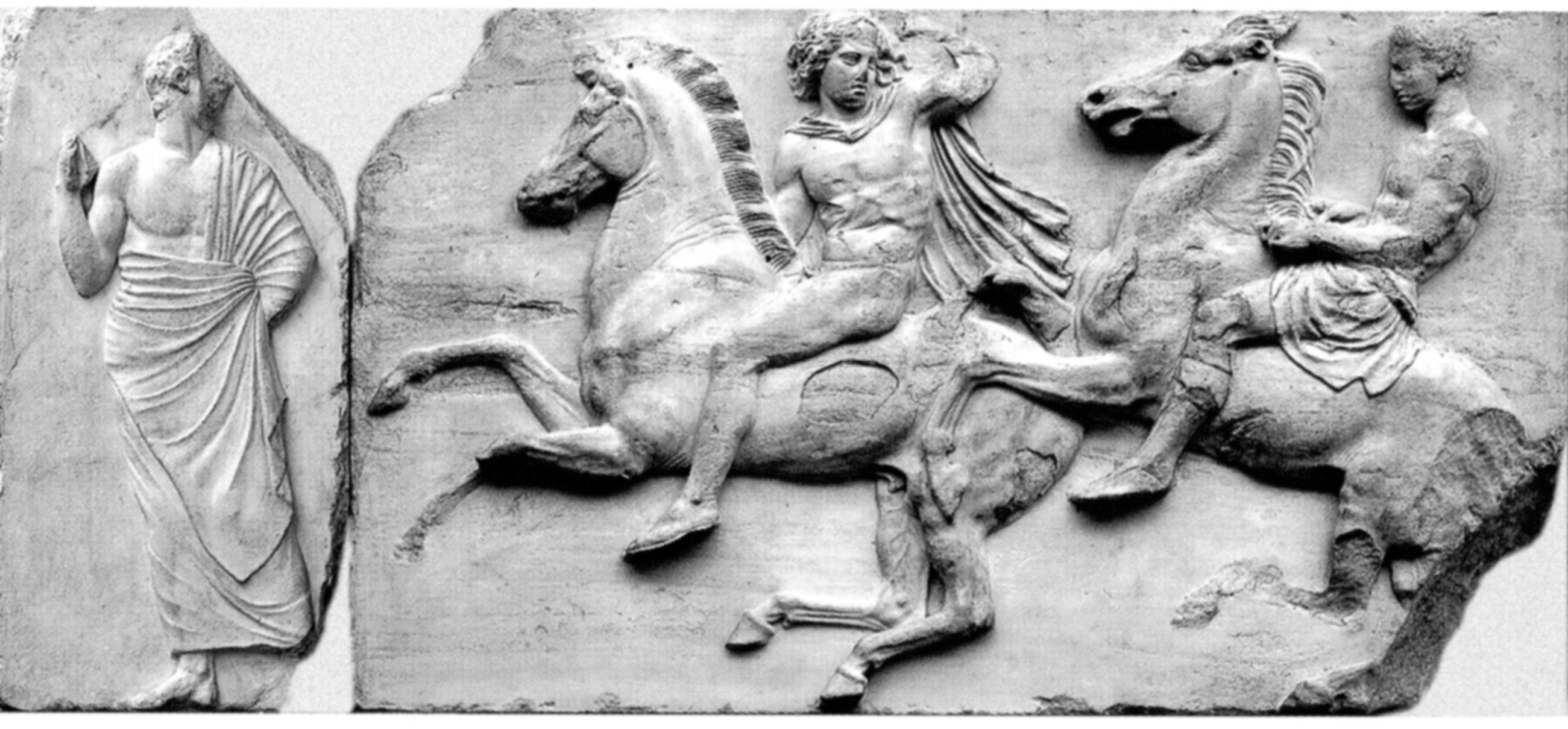
Block 2:
Some of the men bridling their horses, others are talking to each other or getting ready to mount their horses. As some horses are prancing, rearing, and beginnning to gallop, the block also conveys a sense of motion, evoking a sense of excitement for the procession and the remainder of the frieze.
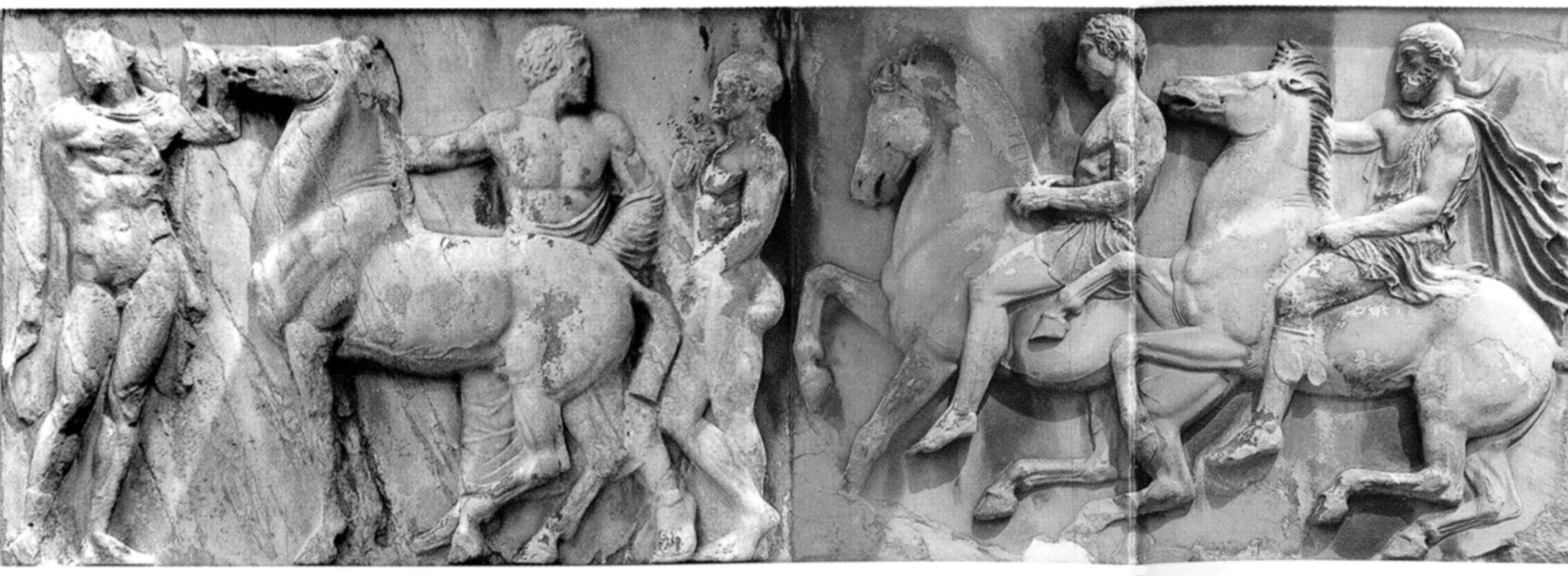
Block 3:
The scene reminds one of a corresponding one on block 12 with the horse in the middle and three figures placed around it. It seems to interrupt the forward movement of the procession.
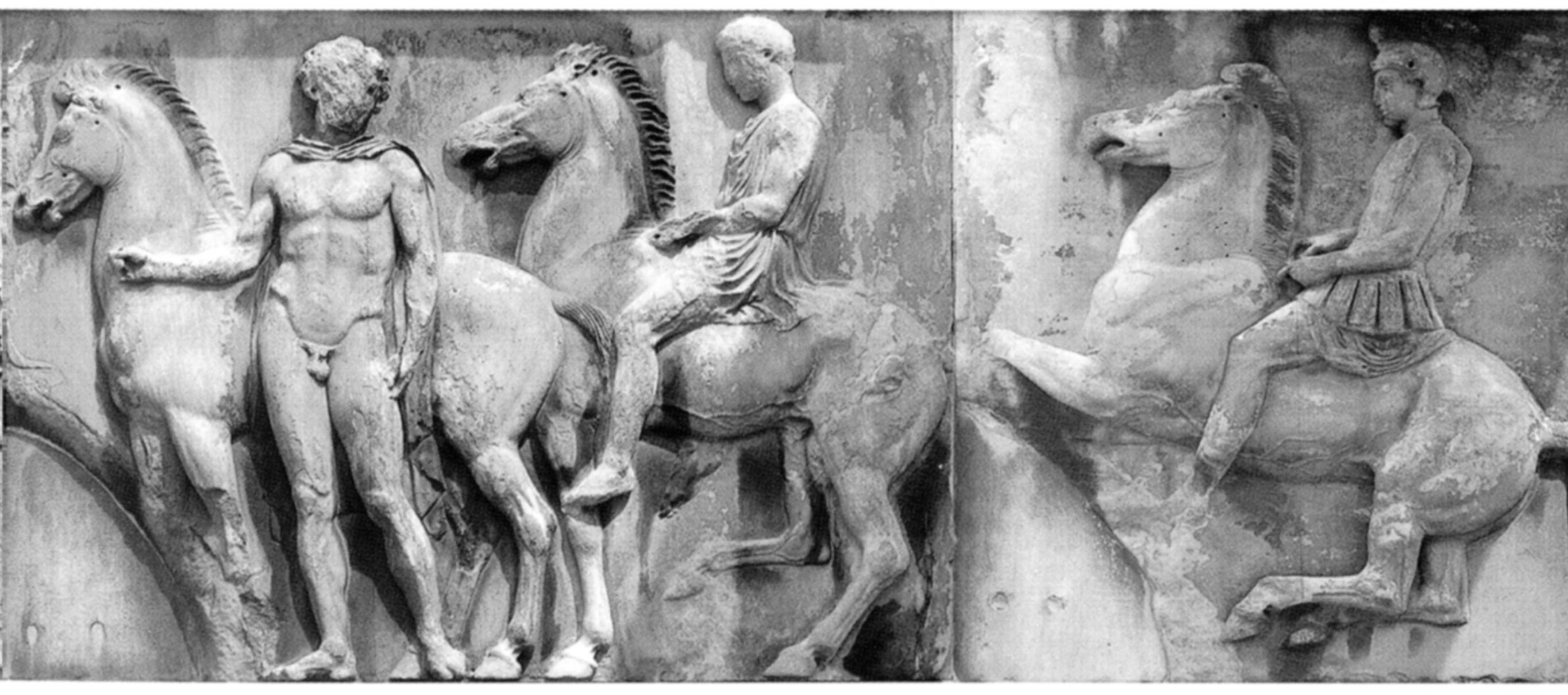
Block 4:
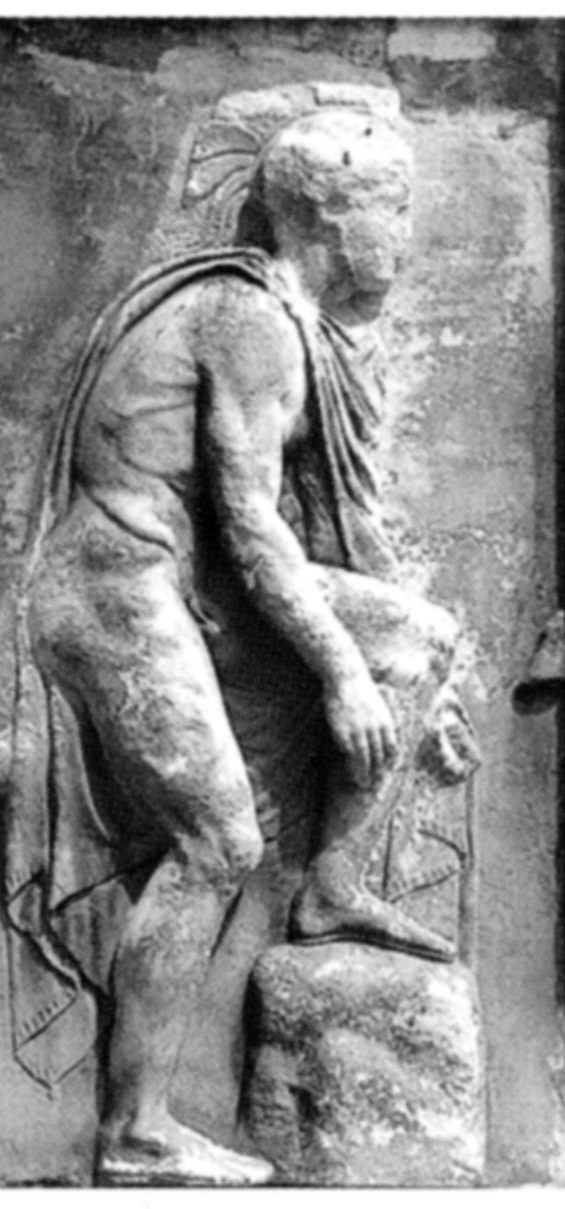
Block 5:
In the center of this section of the frieze is a cavalry commander trying to restrain his rearing horse. It is also the only block in the entire frieze that is devoted to a singular man and horse. Because of its importance, some have suggested this block to be the work of Phidias instead of a collaboration between him and his assistants. Many who see mythological representations in the frieze identify this figure as the mythical hero or king, such as Theseus of Athens.
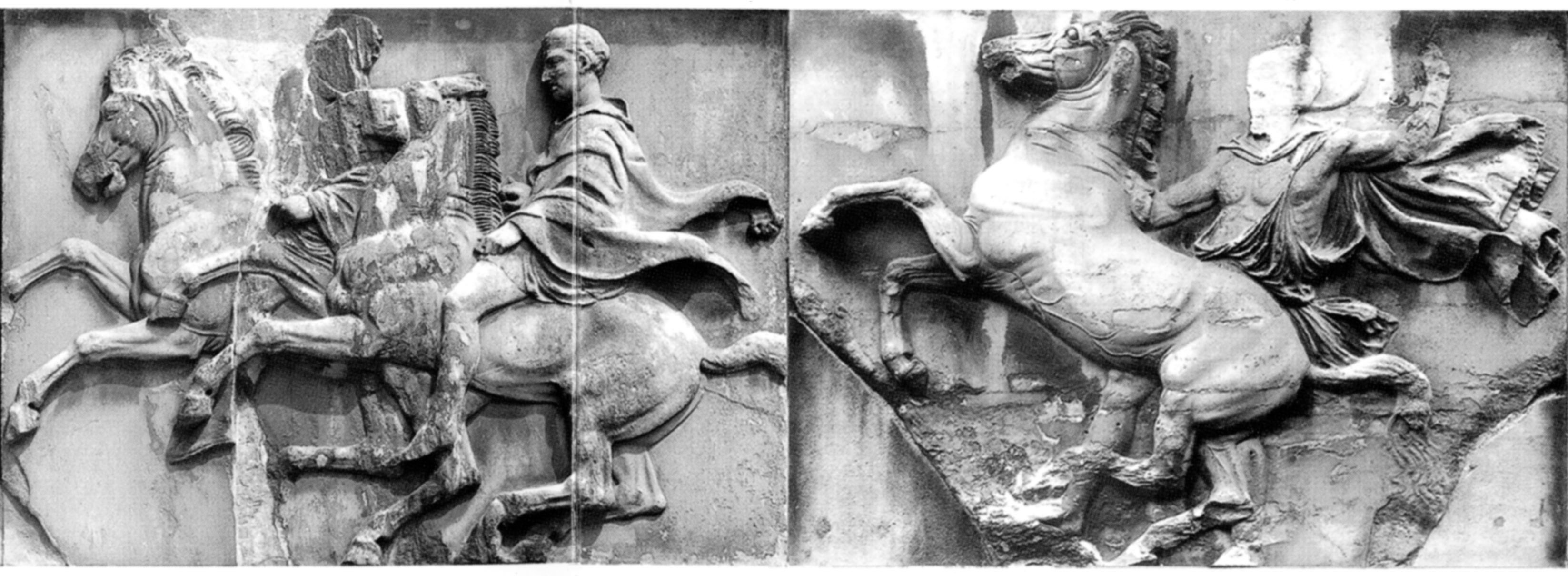
Block 6:

Block 7:
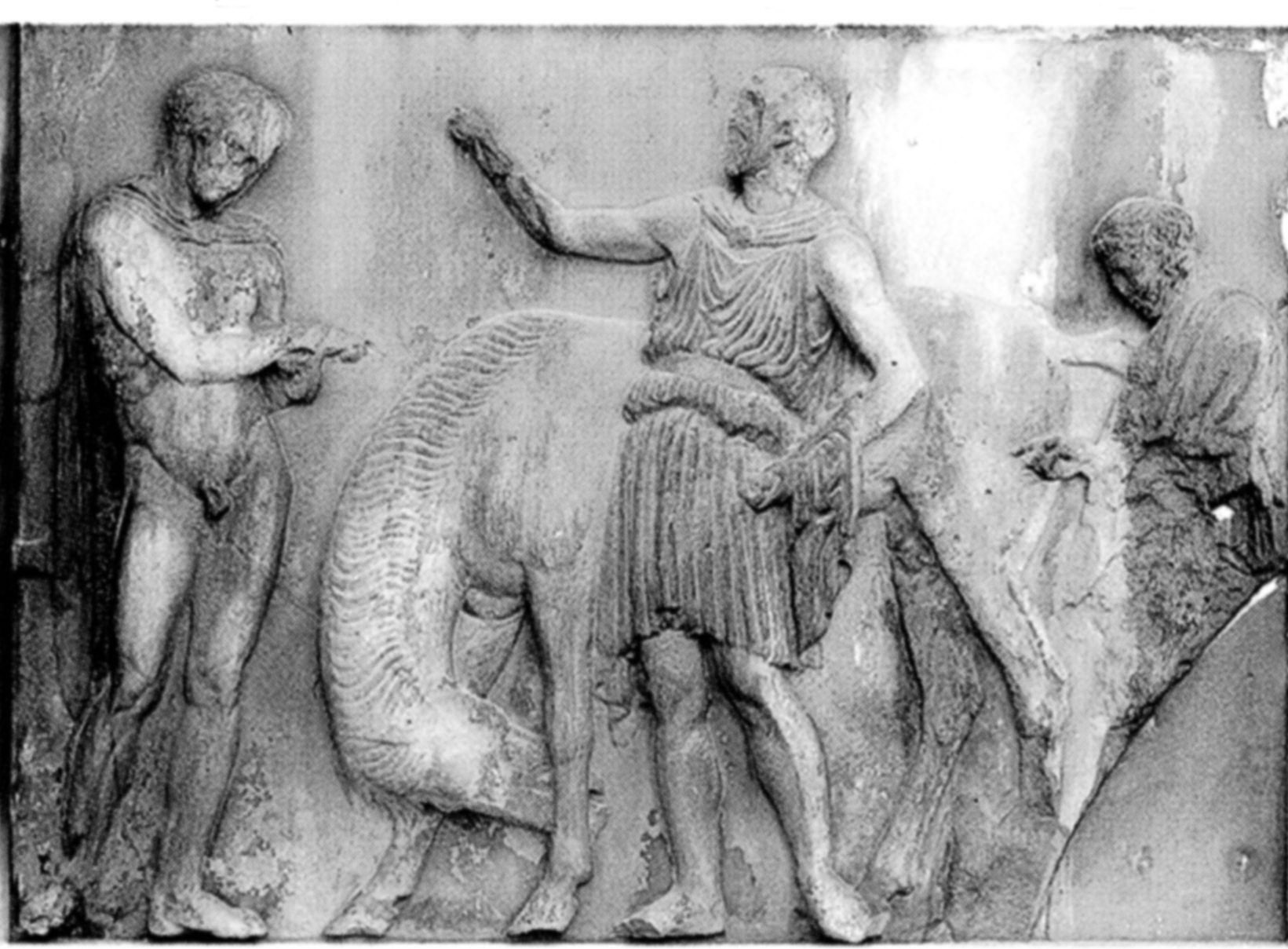
Block 8:
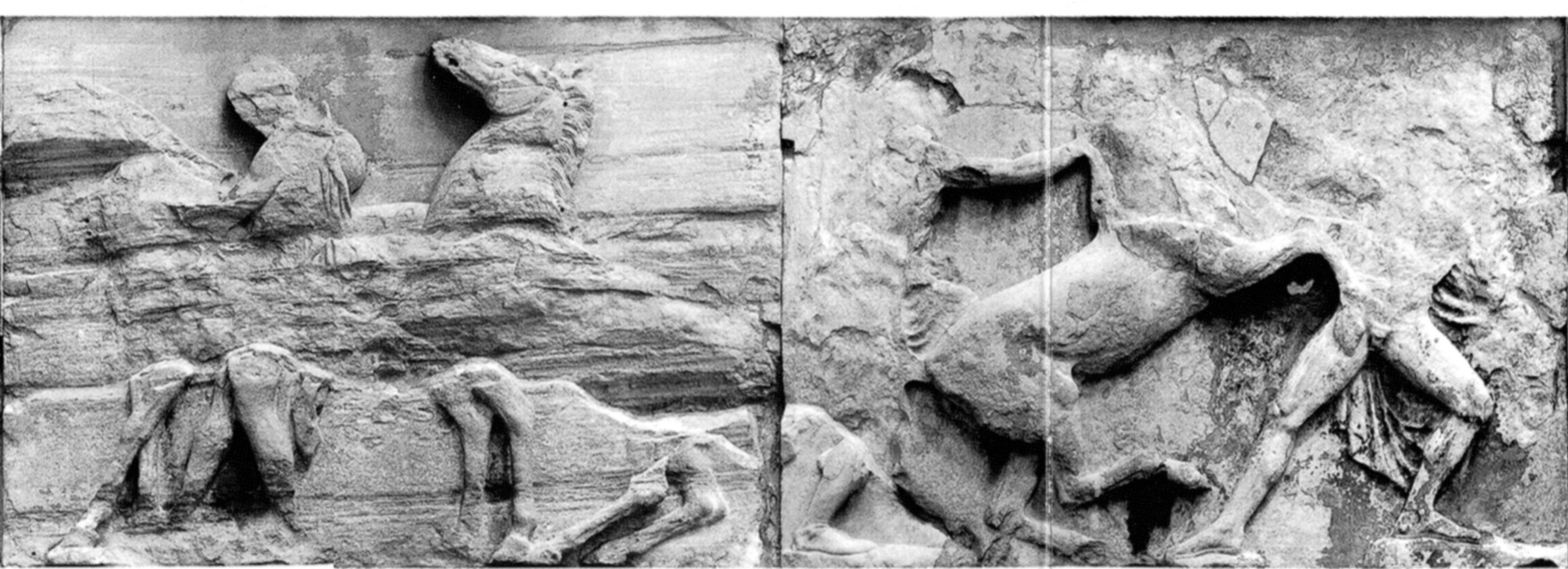
Block 9:
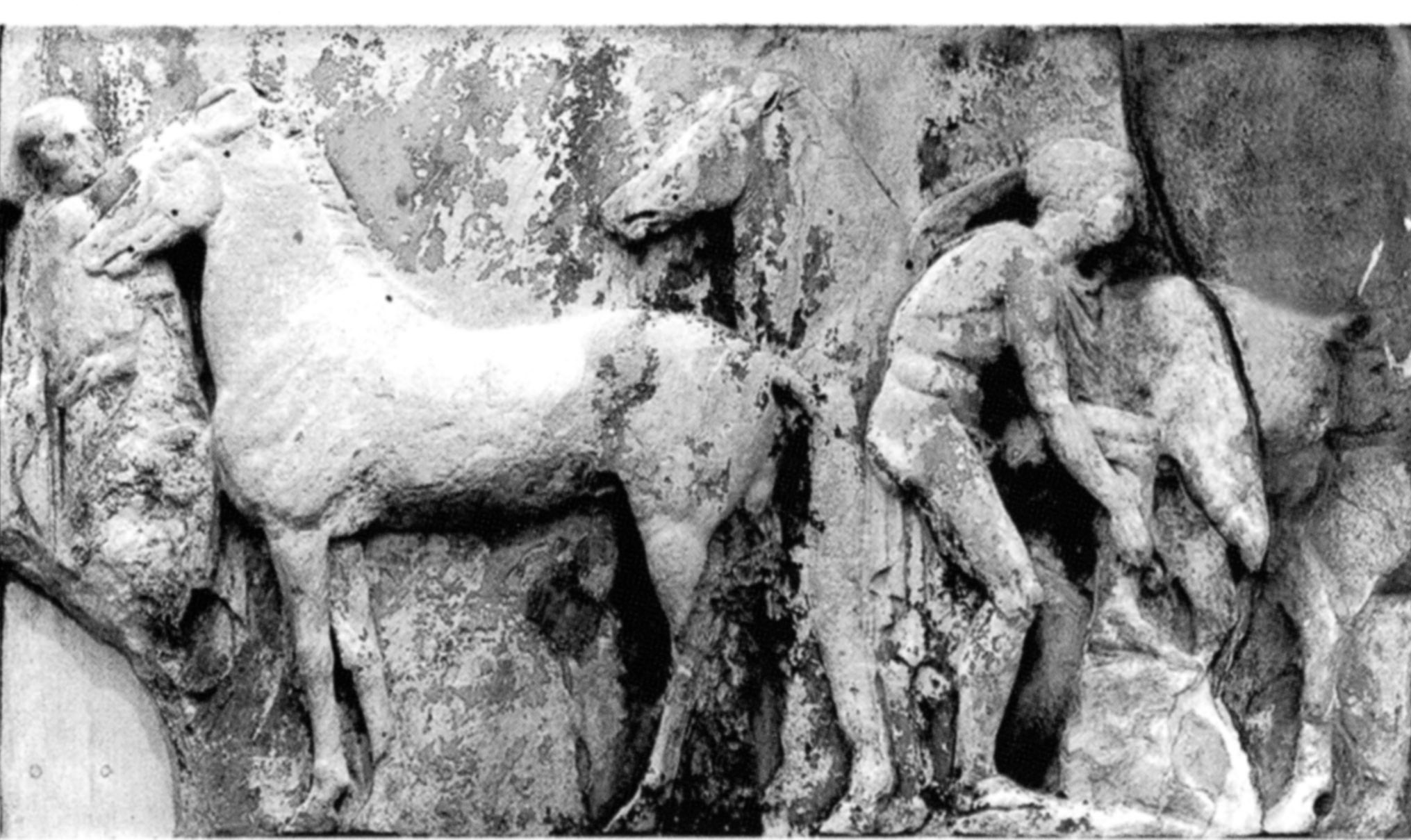
Unless stated otherwise, the pictures and descriptions of text are adapted from this website by Columbia’s Classics Program.